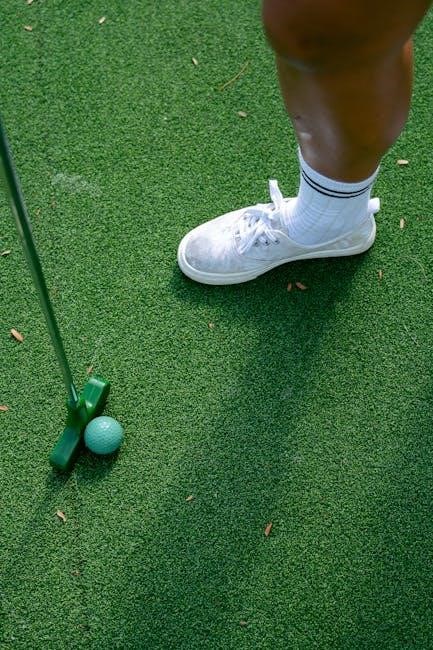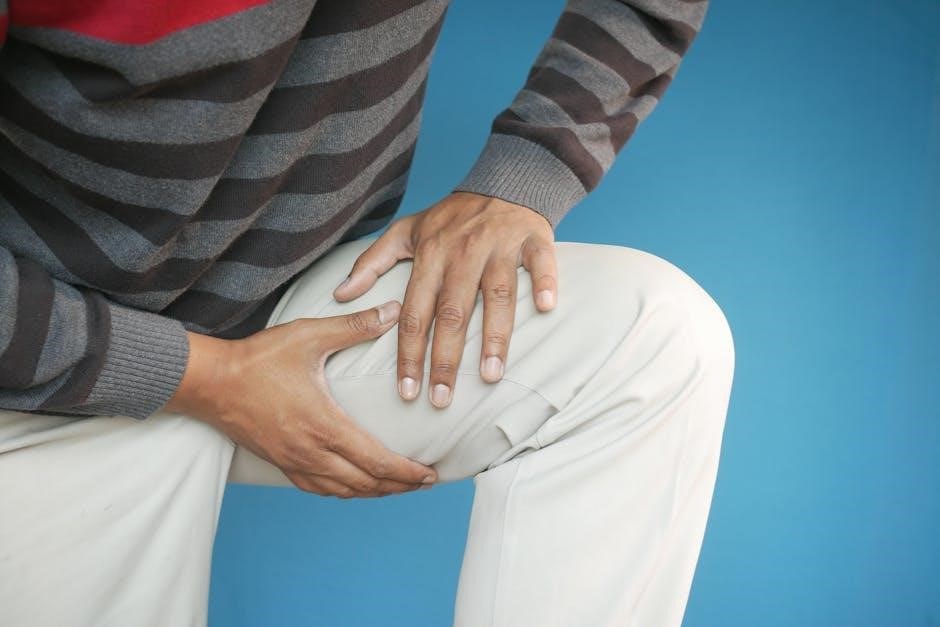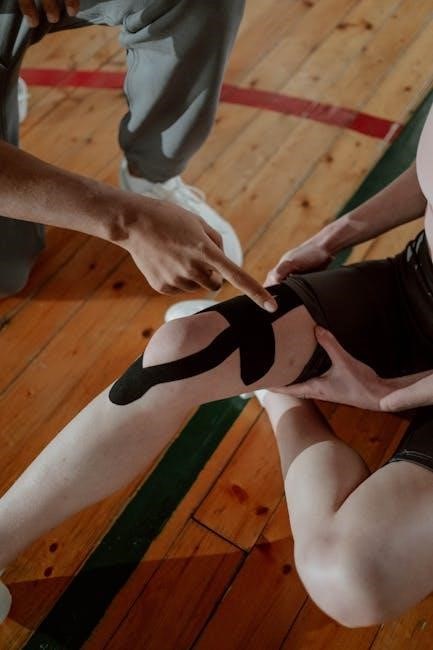total knee replacement exercises pdf
Download our FREE PDF! Gentle total knee replacement exercises to get you moving and feeling better, faster. Start your recovery strong today!
Total Knee Replacement Exercises: A Comprehensive Guide
Welcome! This guide provides comprehensive information on total knee replacement exercises, including pre-operative preparation, immediate post-operative routines, and advanced rehabilitation.
We aim to help you regain mobility and return to a pain-free lifestyle through structured exercise protocols.
Total knee replacement (TKR) is a surgical procedure designed to alleviate pain and restore function in a knee joint damaged by arthritis or injury. Rehabilitation is a crucial component of recovery, focusing on regaining strength, flexibility, and range of motion.
This comprehensive guide provides exercises and protocols to support your journey from pre-operative preparation to long-term recovery. The goal is to optimize outcomes, expedite your return to daily activities, and improve your overall quality of life following TKR. Following a structured exercise plan is essential for a successful recovery.

Pre-operative Exercises and Education
Preparing for surgery is vital. Pre-operative exercises and education can improve your post-operative outcomes. This section outlines key exercises and knowledge to optimize your recovery journey.
Importance of Pre-operative Strengthening
Strengthening muscles before total knee replacement surgery is crucial for a smoother recovery. Stronger muscles support the knee joint, improving post-operative function and reducing recovery time. Pre-operative strengthening enhances balance, stability, and range of motion, making rehabilitation easier. Building muscle mass before surgery helps compensate for muscle loss that naturally occurs after the procedure.
Improved strength also aids in performing daily activities with greater ease during the initial recovery phase. Pre-operative exercise boosts confidence and prepares you mentally for the challenges of post-operative rehabilitation, setting a positive foundation for your return to an active lifestyle.
Range of Motion Exercises Before Surgery
Enhancing range of motion before total knee replacement surgery is essential for optimizing post-operative outcomes. Improved flexibility reduces stiffness and facilitates a quicker return to normal activities. Pre-operative range of motion exercises help maintain joint lubrication and minimize scar tissue formation after surgery. Simple exercises, such as gentle knee bends and stretches, can significantly improve joint mobility.
These exercises prepare the surrounding muscles and ligaments for the demands of rehabilitation. By increasing flexibility, you’ll find it easier to perform post-operative exercises and regain functional movement. Consistent practice can lead to a more comfortable and efficient recovery process.

Immediate Post-operative Exercises (Phase 1: 0-2 Weeks)
Phase 1 focuses on gentle exercises to reduce swelling and pain. Ankle pumps and heel slides are crucial for promoting circulation and initiating knee flexion in the initial weeks.
Ankle Pumps and Quadriceps Sets
Ankle pumps involve repeatedly pointing your toes up towards your shin and then down away from you. This simple exercise enhances blood flow in the lower legs, reducing the risk of blood clots post-surgery. Perform ankle pumps frequently throughout the day, aiming for sets of 10-20 repetitions each hour. Quadriceps sets focus on activating the thigh muscles by tightening them while keeping your leg straight. Hold the contraction for 5-10 seconds and repeat. These exercises are fundamental for regaining muscle control and facilitating early knee extension. Consistency is key for optimal recovery.
Heel Slides for Knee Flexion
Heel slides are a gentle exercise designed to improve knee flexion after total knee replacement. While lying on your back, slowly slide your heel towards your buttocks, bending your knee as far as comfortably possible. Hold the bent position for a few seconds, then slowly straighten your leg back to the starting position. This exercise helps restore range of motion in the knee joint. Perform heel slides several times a day, gradually increasing the number of repetitions and the degree of flexion as tolerated. Focus on smooth, controlled movements to minimize discomfort and promote healing.

Early Rehabilitation Exercises (Phase 2: 2-6 Weeks)
Phase 2 focuses on regaining strength and mobility. These exercises, performed between 2-6 weeks post-surgery, aid in restoring function and promoting a safe return to daily activities.
Straight Leg Raises
Straight leg raises are essential for rebuilding quadriceps strength after total knee replacement. Lie flat on your back, keeping the operative leg straight. Tighten the thigh muscle (quadriceps) and lift your leg about six inches off the ground. Hold this position for a few seconds, then slowly lower the leg back down. This exercise strengthens the muscles that support the knee joint, improving stability and control. Repeat this exercise several times, as directed by your physical therapist, to gradually increase strength and range of motion in the affected leg. Focus on maintaining proper form to maximize benefits and minimize risk.
Partial Squats and Calf Raises
Once you’ve regained some strength, partial squats and calf raises can be introduced to further strengthen the muscles around your knee. For partial squats, stand with your feet shoulder-width apart and gently bend your knees, keeping your back straight. Only squat down a small amount, as if sitting in a chair. Calf raises involve standing with your feet flat on the floor and lifting up onto your toes, engaging your calf muscles. Both exercises help improve balance and stability, crucial for regaining confidence in your movements; Perform these exercises slowly and with controlled movements, gradually increasing repetitions as tolerated.
Intermediate Rehabilitation Exercises (Phase 3: 6-12 Weeks)
Phase 3 focuses on strengthening and increasing your range of motion. It includes exercises like stationary cycling to improve endurance and flexibility, gradually progressing towards more challenging activities.
Stationary Cycling
Stationary cycling is a fantastic low-impact exercise to improve knee joint mobility and build cardiovascular fitness during the intermediate rehabilitation phase (6-12 weeks post-surgery). Start with minimal resistance and a higher seat position to reduce strain on the knee. Gradually increase the resistance and duration of your cycling sessions as your strength and comfort improve. Focus on maintaining a smooth, continuous pedal motion. Incorporate cycling into your routine several times a week to enhance blood flow, strengthen surrounding muscles, and promote overall recovery after total knee replacement; Remember to consult your physical therapist before starting.
Hamstring Curls and Leg Extensions
Hamstring curls and leg extensions are essential for strengthening the muscles around the knee joint during the intermediate rehabilitation phase. Use a weight machine or resistance bands for controlled hamstring curls, focusing on contracting the back of the thigh. Leg extensions should be performed with light weight, gradually increasing resistance as strength improves. Ensure full range of motion without pain. These exercises help stabilize the knee and improve overall leg strength, contributing to better mobility and function. Consult your physical therapist to ensure proper form and progression. Listen to your body and avoid overexertion to prevent injury.
Advanced Exercises and Return to Activity (Phase 4: 12+ Weeks)
Phase 4 focuses on advanced exercises, including balance and agility drills, preparing you for a safe return to desired activities and sports.
Balance and Proprioception Exercises
Balance and proprioception exercises are critical in the advanced stages of rehabilitation after total knee replacement. These exercises focus on improving your body’s awareness of its position in space, enhancing stability and preventing falls. Incorporating activities like single-leg stands, wobble board exercises, and tandem stance helps rebuild neuromuscular control.
Progress gradually, ensuring you maintain proper form and stability throughout each exercise. These exercises restore confidence in your knee’s ability to support you during daily activities and sports. Remember to consult with your physical therapist for personalized guidance.
Agility and Sport-Specific Drills
Agility and sport-specific drills mark the final phase of your total knee replacement rehabilitation, preparing you to return to more demanding physical activities. These drills involve movements like cone drills, shuttle runs, and sport-specific exercises such as light jogging or modified tennis swings. Focus on controlled movements, gradually increasing speed and intensity as your knee strength and stability improve.
Prioritize proper technique to avoid re-injury. Consult with your physical therapist to tailor these drills to your specific sport or activity goals. These exercises help you regain confidence and function.

Important Considerations and Precautions
Safety first! This section emphasizes the importance of understanding potential risks during your recovery. Adhering to precautions and recognizing warning signs is crucial for a successful outcome.
Pain Management and Swelling Control
Post-operative pain and swelling are common after total knee replacement. Effective management is crucial for successful rehabilitation. Pain control often involves prescribed medications, but non-pharmacological methods like ice packs and elevation can also play a significant role. Applying ice to the knee for 15-20 minutes several times a day helps reduce swelling and alleviate pain. Elevating your leg above heart level promotes fluid drainage and further minimizes swelling. Compression bandages can provide additional support and control swelling. Always consult your doctor for personalized pain management strategies.
Signs of Complications and When to Seek Medical Attention
While total knee replacement is generally safe, recognizing potential complications is essential. Be vigilant for signs of infection, such as increased redness, warmth, or drainage at the incision site, accompanied by fever or chills. Persistent or worsening pain despite medication, sudden swelling or stiffness, or calf pain could indicate a blood clot. Numbness or tingling in the leg or foot may signal nerve damage. If you experience any of these symptoms, contact your surgeon or healthcare provider immediately. Early intervention is crucial to address complications promptly and ensure a successful recovery.
Resources for Total Knee Replacement Exercises (PDFs and Online Guides)
Need more? This section offers links to PDFs and online guides with exercise protocols. Find reputable sources and qualified physical therapists to support your rehabilitation journey.
Links to Reputable Exercise Protocols
Looking for reliable exercise plans? Access a curated list of direct links to reputable exercise protocols for total knee replacement recovery. These resources, often in PDF format, are sourced from leading medical institutions, hospitals like Mass General, Brigham and Women’s, and universities such as Ohio State.
These protocols offer detailed instructions, illustrations, and timelines for each phase of rehabilitation, ensuring you have access to the most current and evidence-based guidance available. Proper guidance can greatly improve recovery.
Finding Qualified Physical Therapists
Need expert guidance? Locating a qualified physical therapist is crucial for a successful total knee replacement recovery. A physical therapist can create a personalized exercise plan, monitor your progress, and adjust your routine as needed.
Resources like the American Academy of Hip and Knee Surgeons (AAHKS) can help you find experienced surgeons and therapists specializing in joint replacement. Local hospitals such as UCLA Health, Aurora Health Care, and Piedmont often have listings of affiliated physical therapy centers.

